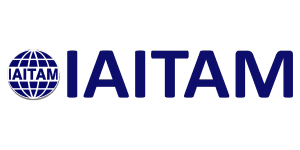Forum Replies Created
-
AuthorPosts
-
August 22, 2024 at 10:37 am in reply to: Describe a time when there was a miscommunication and explain how you handled it. #63006
Martha Ibarra
ParticipantN/A
August 22, 2024 at 10:23 am in reply to: Think of another form of communication that isn’t mentioned in the chapter. #63005Martha Ibarra
ParticipantBody language.
August 21, 2024 at 3:16 pm in reply to: Do you have templates for paperwork such as a Request for Quote or Request for Proposal? #62991Martha Ibarra
ParticipantYes, we do have some standard templates.
August 21, 2024 at 3:03 pm in reply to: Do you or will you have personnel lined up to support the management roles? #62990Martha Ibarra
ParticipantI think if we upskill member of the team we should be completely covered.
August 21, 2024 at 2:59 pm in reply to: How can your organization help the environment when it comes to IT assets? #62989Martha Ibarra
ParticipantEnergy Efficiency:
Upgrade to Energy-Efficient Hardware: Use energy-efficient servers, computers, and other IT equipment. Look for ENERGY STAR certified products.
Implement Power Management: Configure devices to enter sleep mode when not in use and enable power-saving features.
Optimize Data Centers: Use techniques like virtualization, consolidation, and efficient cooling to reduce energy consumption in data centers.
Sustainable Procurement:Buy Eco-Friendly Products: Choose IT equipment from manufacturers with strong environmental practices and certifications (e.g., EPEAT, ENERGY STAR).
Prioritize Reusability: Opt for modular and upgradeable equipment to extend the lifecycle of your IT assets.
Reduce E-Waste:Proper Disposal: Follow proper recycling and disposal protocols for outdated or broken equipment. Partner with certified e-waste recyclers.
Donate or Reuse: Donate usable equipment to charities or schools, or repurpose it within your organization.
Lifecycle Management:Implement a Green IT Policy: Develop and enforce policies that emphasize sustainability throughout the lifecycle of IT assets, from procurement to disposal.
Monitor and Manage Resources: Use software tools to monitor and manage IT asset usage and efficiency, ensuring optimal performance and minimal waste.
Reduce Paper Usage:Adopt Digital Solutions: Encourage the use of digital documents and workflows to reduce the need for paper.
Implement Document Management Systems: Use electronic document management systems to organize, store, and share documents digitally.
Promote Remote Work:Support Telecommuting: Enable remote work options to reduce commuting and the associated carbon footprint.
Educate and Engage Employees:Awareness Programs: Educate employees about sustainable IT practices and encourage them to adopt green behaviors.
Green IT Champions: Appoint green IT champions within the organization to promote and lead sustainability initiatives.
Support Sustainable Energy:Use Renewable Energy: Where possible, power your IT infrastructure with renewable energy sources like solar or wind.
August 20, 2024 at 6:16 pm in reply to: Does your organization already have asset disposal? If not, what’s one thing you can do when you return to encourage that? #62971Martha Ibarra
ParticipantYes
August 19, 2024 at 4:16 pm in reply to: How do your standards align with IAITAM’s high standards for the profession? #62918Martha Ibarra
ParticipantMy standards are aligned with the IAITAM as I have a clear understanding of the organization guidelines, the goals and objectives are well defined and the policies are constantly reviewed and updated as needed, we have access and the necessary training for the required tools, we also have a clear training path, we monitor and evaluate our performance, and constant improvement is a must.
August 19, 2024 at 4:05 pm in reply to: How do your standards align with IAITAM’s high standards for the profession? #62915Martha Ibarra
ParticipantMy organization is already aligned with IAITAM standards as we have a strong process in place.
Martha Ibarra
ParticipantUnique Asset ID: A unique alphanumeric code or serial number that identifies the asset. This helps in differentiating it from other assets and is often used in asset management systems.
Barcode/QR Code: A scannable barcode or QR code that can be used to quickly retrieve asset details from an asset management system. This facilitates easy tracking and inventory management.
Support Contact: Information on whom to contact for support or maintenance, such as an IT department contact or vendor support details.
Martha Ibarra
ParticipantIntegration with IT Service Management (ITSM)
Unified Platforms: Many organizations are integrating ITAM with ITSM tools to provide a comprehensive view of assets and services. This integration helps in tracking asset lifecycle, managing incidents, and improving service delivery.
ITIL Alignment: Aligning ITAM practices with ITIL (Information Technology Infrastructure Library) frameworks helps ensure that asset management supports broader IT service management goals. -
AuthorPosts
